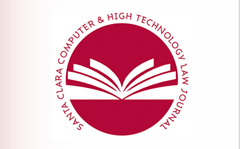Abstract
Since the Federal Circuit’s 2007 In re Bilski decision and the Supreme Court’s 2008 Bilski v. Kappos decision, patent law’s subject-matter eligibility standard under 35 U.S.C. §101 has been uncertain. This paper posits patent law’s patent-ineligible abstract ideas are science concepts and science laws, composed of science concepts, as defined by science philosophers. Somewhat analogous to copyright law, it also presents a downward patent-eligibility Hand abstractions test from an alleged abstract idea, natural law, or natural phenomenon to independent claims as a coherent, systematic, and practical approach to judging utility-patent eligibility. Patent claims manifest an innate vertical abstractions ladder, so there is no need to further abstract ideas from the claims. The fact-finder must add features to the alleged abstract idea, natural law, or natural phenomenon to move down the abstractions ladder to see whether an independent claim merges with the abstract idea, natural law, or natural phenomenon while combating human compulsions, and the test’s known bias, toward over-abstraction. The test automatically adjusts to ever-changing science concepts and laws and their word expressions.
Recommended Citation
Mark R. Carter,
Copyright's Hand Abstractions Test for Patent's Section 101 Subject-Matter Eligibility,
30 Santa Clara High Tech. L.J. 469
(2014).
Available at: https://digitalcommons.law.scu.edu/chtlj/vol30/iss4/2
